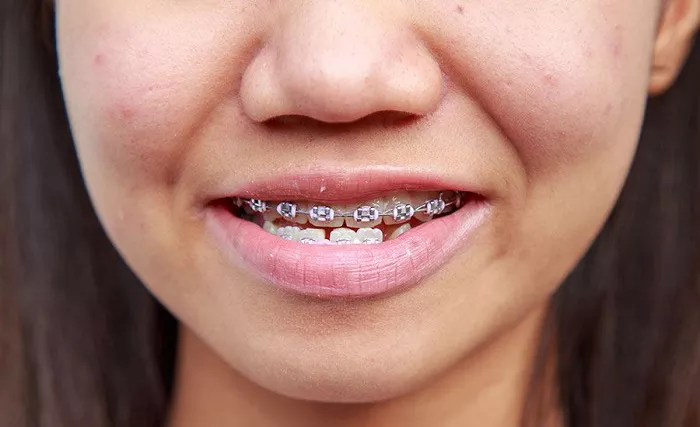An underbite, also known as a Class III malocclusion, is a dental condition where the lower teeth protrude past the upper teeth. This misalignment can affect not only your appearance but also your ability to chew, speak, and maintain oral health. Braces are a common treatment option for correcting underbites, but many patients wonder: How long will it take to fix an underbite with braces? This article will provide a detailed explanation of the treatment process, factors that influence the timeline, and what you can expect during your journey to a healthier, more aligned smile.
Understanding Underbites
An underbite occurs when the lower jaw (mandible) is positioned forward relative to the upper jaw (maxilla). This misalignment can be caused by genetics, childhood habits like thumb-sucking, or abnormal jaw development. Underbites can range from mild to severe, and the treatment approach depends on the severity of the condition.
Why Correct an Underbite?
Aesthetic Concerns: An underbite can affect facial symmetry and self-confidence.
Functional Issues: It can lead to difficulty chewing, speaking, and even breathing.
Oral Health Risks: Misaligned teeth are harder to clean, increasing the risk of cavities, gum disease, and tooth wear.
How Do Braces Fix an Underbite?
Braces are a common orthodontic treatment for correcting underbites, especially in cases where the misalignment is mild to moderate. They work by applying continuous pressure to the teeth and jaws, gradually moving them into their proper positions. In some cases, additional appliances like rubber bands or headgear may be used to enhance the effectiveness of braces.
Types of Braces for Underbites
Traditional Metal Braces: These are the most common and effective option for correcting underbites.
Ceramic Braces: Less noticeable than metal braces, making them a popular choice for adults.
Lingual Braces: Placed on the back of the teeth, these braces are invisible from the front.
Clear Aligners: While not always suitable for severe underbites, clear aligners like Invisalign can be used for mild cases.
Factors That Influence the Treatment Timeline
The time it takes to fix an underbite with braces varies depending on several factors. Understanding these factors can help you set realistic expectations for your treatment.
Severity of the Underbite
Mild underbites may take less time to correct, while severe cases may require longer treatment.
Age of the Patient
Children and teenagers often experience faster results because their jaws are still growing and more responsive to treatment.Adults may require longer treatment times due to denser bone structure and fully developed jaws.
Compliance with Treatment
Following your orthodontist’s instructions, such as wearing rubber bands or attending regular appointments, is crucial for achieving timely results.
Type of Braces Used
Traditional braces are typically faster at correcting underbites compared to clear aligners, which may take longer for complex cases.
Additional Appliances
In some cases, orthodontic appliances like headgear or expanders may be needed to correct jaw alignment, which can extend the treatment timeline.
General Timeline for Fixing an Underbite with Braces
While every case is unique, here’s a general timeline of what you can expect when fixing an underbite with braces:
Initial Consultation and Planning (1-2 Weeks)
During your first visit, your orthodontist will evaluate your teeth and jaws, take X-rays, and create a customized treatment plan. This plan will outline how long it will take to correct your underbite and what type of braces are best for your case.
Placement of Braces (1-2 Hours)
The braces are bonded to your teeth during a single appointment. This process is painless but may feel uncomfortable as you adjust to the new hardware.
Initial Alignment (3-6 Months)
Before addressing the underbite, your orthodontist may need to align your teeth properly. This step ensures that the teeth move in the right direction and prevents complications.
Correcting the Underbite (6-18 Months)
Once your teeth are aligned, the braces will begin to correct the underbite. This phase involves moving the teeth and jaws into their proper positions. The time required depends on the severity of the underbite and the type of braces used.
Fine-Tuning and Final Adjustments (3-6 Months)
After the underbite is corrected, your orthodontist will make final adjustments to ensure your bite is properly aligned and your teeth are in their ideal positions.
Retention Phase (Ongoing)
Once the braces are removed, you’ll need to wear a retainer to prevent the underbite from returning. This phase is crucial for maintaining your results.
What to Expect During Treatment
Discomfort and Adjustments
It’s normal to experience some discomfort, especially after adjustments. Over-the-counter pain relievers and orthodontic wax can help alleviate soreness.
Regular Appointments
You’ll need to visit your orthodontist every 4-6 weeks for adjustments and progress checks. These appointments are essential for keeping your treatment on track.
Visible Progress
Over time, you’ll notice your underbite gradually improving. Take photos to track your progress and stay motivated.
Can Underbites Return After Braces?
Yes, underbites can return after braces if proper retention measures are not taken. This is why wearing a retainer is so important. Your orthodontist will provide you with a retainer and instructions on how long to wear it each day. In most cases, you’ll need to wear the retainer full-time initially and then transition to wearing it only at night.
Conclusion
Fixing an underbite with braces is a highly effective treatment that can improve your smile, oral health, and overall quality of life. While the process requires time and patience, the results are well worth the effort. The timeline for correcting an underbite depends on factors like the severity of the condition, the type of braces used, and your compliance with treatment. On average, it can take anywhere from 12 to 36 months to achieve the desired results.

